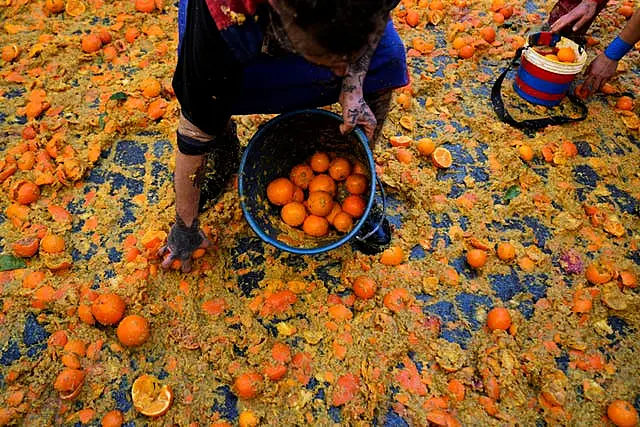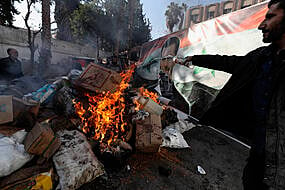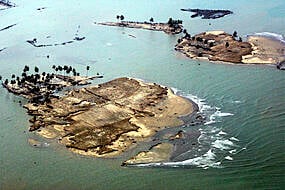Over three pulpy days, nearly 1,000 tons of oranges were thrown in the re-creation of a medieval battle that has become the centrepiece of the northern Italian town of Ivrea’s annual carnival.
Some 50 horse-drawn carriages transport the oranges to piazzas throughout the town, where teams gather to pelt each other with oranges.

It is not long before the aranceri, or orange throwers, are drenched in pulp. Bystanders also get caught in the spray.
The origin of the food fight is believed to date to about 1200 and the revolt against a tyrannical baron, resulting in his overthrow, the destruction of his castle and the creation of a free municipality.
The battle was originally waged with beans, changing to oranges some time along the way. The northern Piedmont region is not known for its orange groves and they arrive from southern Italy.

Organisers say it is a waste-free event, since they buy oranges that do not make the grade and would otherwise be thrown out.
By the end of each day, piazzas are covered in a layer of pulp, the result of tons of oranges not only being thrown but trodden on by the thousands of tourists and residents who flood the city during the three-day event, which ended on Tuesday.
The oranges are gathered by ploughs and taken to the town’s compost centre.





